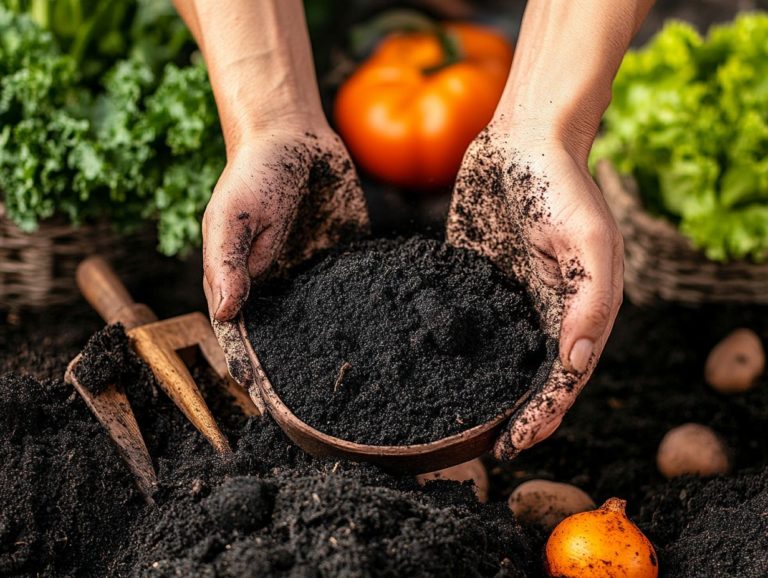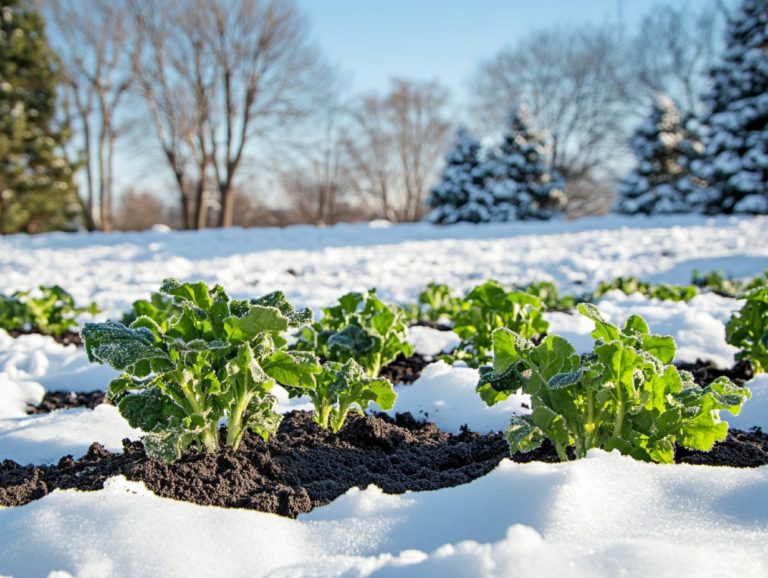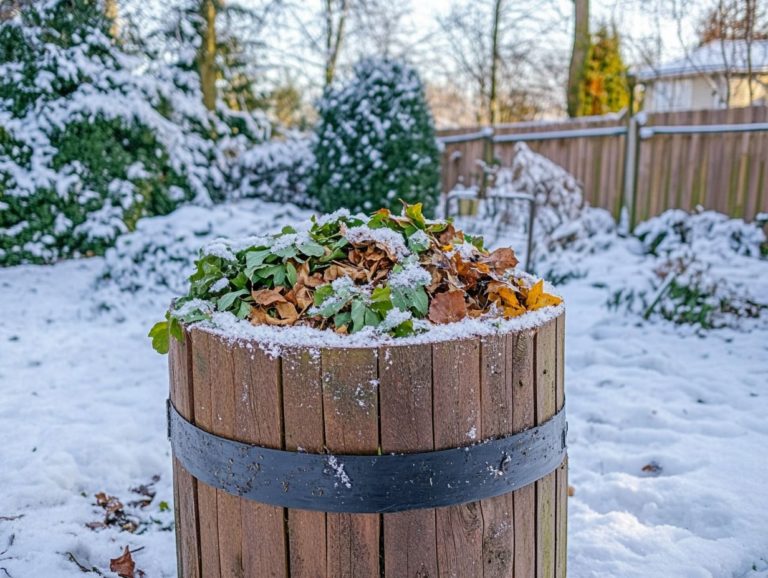How to Use Cover Crops for Soil Health
Cover crops are not just a fleeting farming trend; they are essential for improving soil health and promoting sustainability.
This article explains what cover crops are and their benefits, such as enhancing soil fertility and reducing erosion. You’ll discover various types, including legumes and grasses, each with unique advantages.
We thoroughly discuss practical methods for integrating cover crops into your farming practices and how to evaluate their impact on soil quality.
The article also addresses common challenges you might face, offering effective solutions to ensure you’re prepared to maximize the benefits of cover crops in your agricultural pursuits.
Contents
Key Takeaways:

- Cover crops enhance soil health by improving fertility and structure while reducing erosion and weed growth.
- Different types of cover crops, like legumes and grasses, cater to various soil needs.
- To use cover crops effectively, implement proper planting, maintenance, and termination techniques, and measure their impact on soil health.
What are Cover Crops?
Cover crops are your allies in achieving healthier soil, improved crop rotation, and sustainable farming practices. By incorporating cover crops into your agricultural system, you can boost soil microorganisms and organic matter significantly.
Popular choices like winter rye, clover, and legumes do more than help plants get nitrogen; they also offer benefits such as weed suppression and erosion control. Understanding cover crops is crucial for boosting your farm’s productivity today!
These crops act as green manure, which means they improve soil health when they decompose. Their roots reach deep into the soil, promoting aeration and water infiltration key factors for robust plant development. As they decompose, they release valuable organic matter and nutrients back into the soil, enriching its fertility.
The interactions between cover crops and soil ecology foster a vibrant ecosystem of beneficial organisms that naturally mitigate pests. Embracing biodiversity not only strengthens your farming but also helps the planet!
The Benefits of Cover Crops for Soil Health
Cover crops provide numerous advantages for soil health, playing a pivotal role in nitrogen cycling, enhancing soil biology, and refining nutrient management strategies.
By boosting soil organic matter and encouraging beneficial organisms like earthworms, cover crops cultivate a dynamic soil food web that underpins agricultural productivity.
Improving Soil Fertility and Structure
Cover crops enhance soil fertility and structure by increasing organic biomass and facilitating nutrient cycling within the soil profile. As living roots penetrate the earth, they create channels that improve water infiltration and promote soil aggregation, ultimately leading to healthier and more resilient agricultural systems.
These benefits arise from various mechanisms, including the decomposition of cover crops like clover and rye, which add essential organic matter to the soil. Clover, for instance, is a nitrogen-fixing plant that enriches the soil with this vital nutrient, while rye effectively suppresses weed growth and mitigates erosion.
As these plants thrive and decompose, they contribute to the soil s organic matter and enhance microbial activity, leading to improved nutrient availability. The diverse root systems of these cover crops break up compacted layers, allowing for better aeration and root growth for your subsequent cash crops, thus creating a sustainable cycle of soil enhancement.
Reducing Erosion and Weed Growth
Cover crops are vital for reducing soil erosion and suppressing weed growth. They help keep your agricultural lands intact and productive.
These crops provide ground cover during fallow periods, shielding your soil from wind and water erosion. They also outcompete weeds for valuable resources.
Crops like rye, clover, and vetch are excellent choices. They create a protective layer, anchor the soil, and improve its structure and nutrient content.
Integrate cover crops into your farming plan by planting them between cash crops or as winter cover. This approach minimizes erosion and boosts soil health.
Types of Cover Crops

You have many cover crop options to choose from. Each option provides unique benefits to meet your agricultural needs.
Consider clover, winter rye, or buckwheat based on your soil health goals. Tailor your selection to optimize your land’s health and productivity.
Legumes, Grasses, and Other Options
Legumes and grasses are top cover crop choices. They enrich soil health through nitrogen processes and improve soil structure.
Integrating legumes like clover and vetch boosts soil nitrogen levels, essential for robust plant growth. Grasses like rye and oats enhance soil texture and prevent erosion.
Using legume cover crops before cash crops like corn can reduce fertilizer needs and promote healthier yields. This is key for sustainable farming practices.
Incorporating Cover Crops into Your Farming Practices
Incorporating cover crops requires careful planning and execution. Focus on planting, maintaining, and terminating them effectively.
Successful integration enhances soil moisture, minimizes nutrient loss, and improves soil health over time.
Planting, Maintenance, and Termination Techniques
Effective cover crop management involves specific planting methods and maintenance routines. Understanding timing and techniques is vital for achieving optimal productivity.
Start with selecting the right species for your soil type and climate. Use methods like no-till drilling or broadcast seeding for good soil contact.
Maintenance is key; keep an eye out for pests and ensure proper watering and fertilization. This sets you up for success!
When terminating cover crops, consider mowing, tilling, or using herbicides. Timing is crucial to prevent nutrient lock-up and promote decomposition.
By following these best practices, you can greatly enhance your soil structure, increase organic matter, and improve biodiversity in your agricultural system!
Measuring the Impact of Cover Crops on Soil Health
Measuring the impact of cover crops on soil health involves assessing changes in soil composition and quality. Regular evaluations provide insights into the effectiveness of your cover crop strategies.
Assessing Changes in Soil Composition and Quality
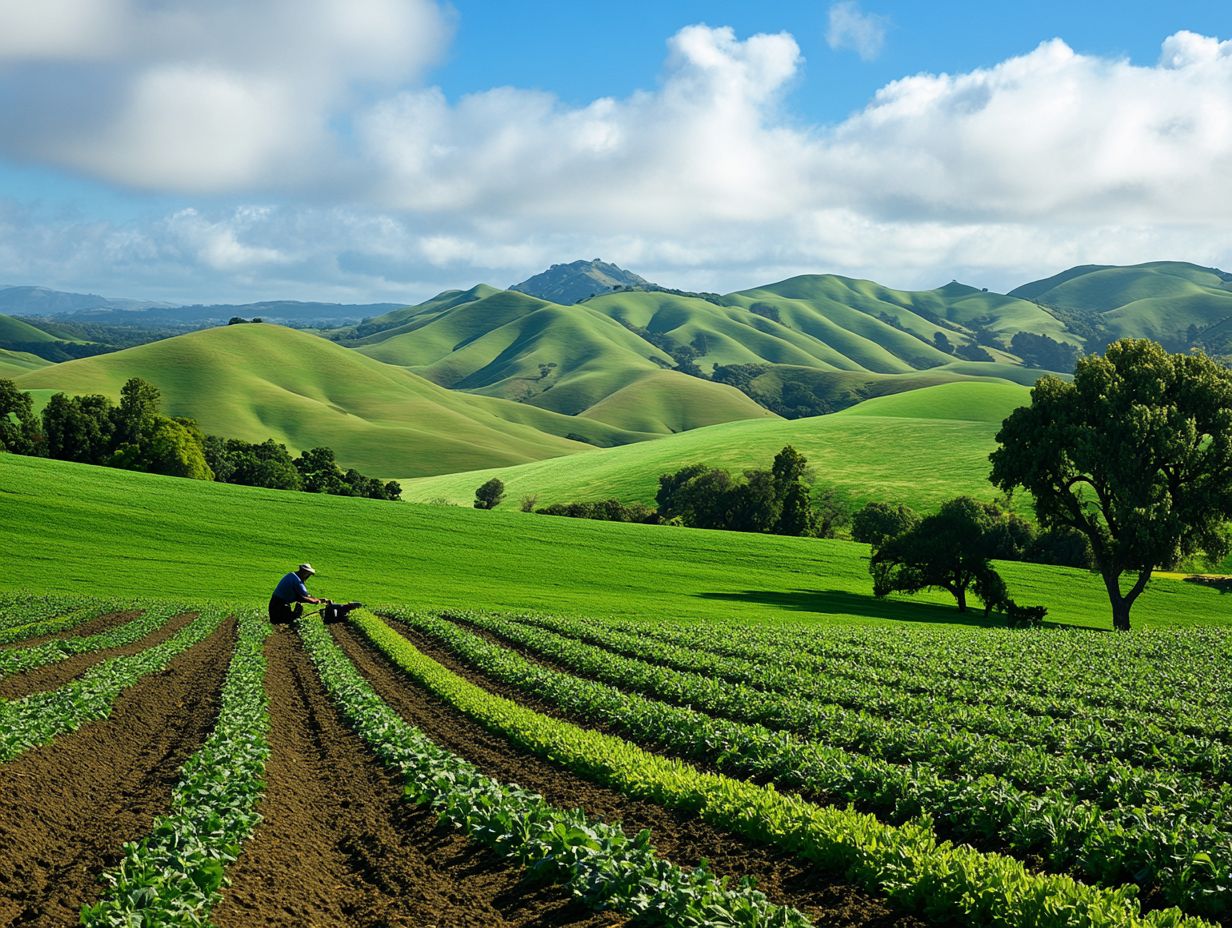
Assessing changes in soil composition and quality after implementing cover crops is important for managing nutrients effectively and ensuring long-term soil health. By employing various soil testing techniques, you can gain valuable insights into the benefits of your cover crops.
Through methods such as soil sampling, chemical analysis, and nutrient profiling, you can evaluate critical factors like pH levels, organic matter content, and the presence of essential nutrients. This data helps in making informed decisions about fertilization and crop rotation, ultimately leading to improved yield.
Understanding soil composition enhances your nutrient management practices and strengthens the resilience of your farmland against erosion and nutrient leaching. Regularly assessing your soil’s health contributes to a more sustainable agricultural ecosystem, resulting in enhanced productivity and a reduced environmental impact over time.
Challenges and Solutions for Using Cover Crops
Despite the myriad benefits they offer, utilizing cover crops presents challenges. Considerations such as timing, species selection, and potential competition with cash crops are crucial.
Finding solutions to these challenges helps you take full advantage of cover crops in sustainable farming.
Addressing Common Obstacles and Concerns
Addressing common obstacles related to cover crops is vital for you as a farmer, especially when striving to enhance soil health. Issues such as weed control and species compatibility can be effectively tackled through careful planning and management techniques.
To confront these challenges, begin by meticulously selecting cover crop species that align with your specific soil conditions and cropping systems. For instance, incorporating legumes like clover raises nitrogen levels and suppresses weeds due to their rapid growth.
Establishing a cover cropping calendar will help you optimize planting and termination timings, ultimately reducing weed emergence. Additionally, employing no-till practices after cover crop termination minimizes soil disturbance, fostering a healthier ecosystem.
By adopting these tailored strategies, you can confidently navigate the complexities of cover crop implementation and fully harness their numerous benefits.
Frequently Asked Questions
What are cover crops and how do they improve soil health?
Cover crops are plants grown specifically to improve soil health. They help increase organic matter, prevent erosion, and provide nutrients through their roots and leaves.
How do I choose the right cover crops for my soil, and when should I plant them?
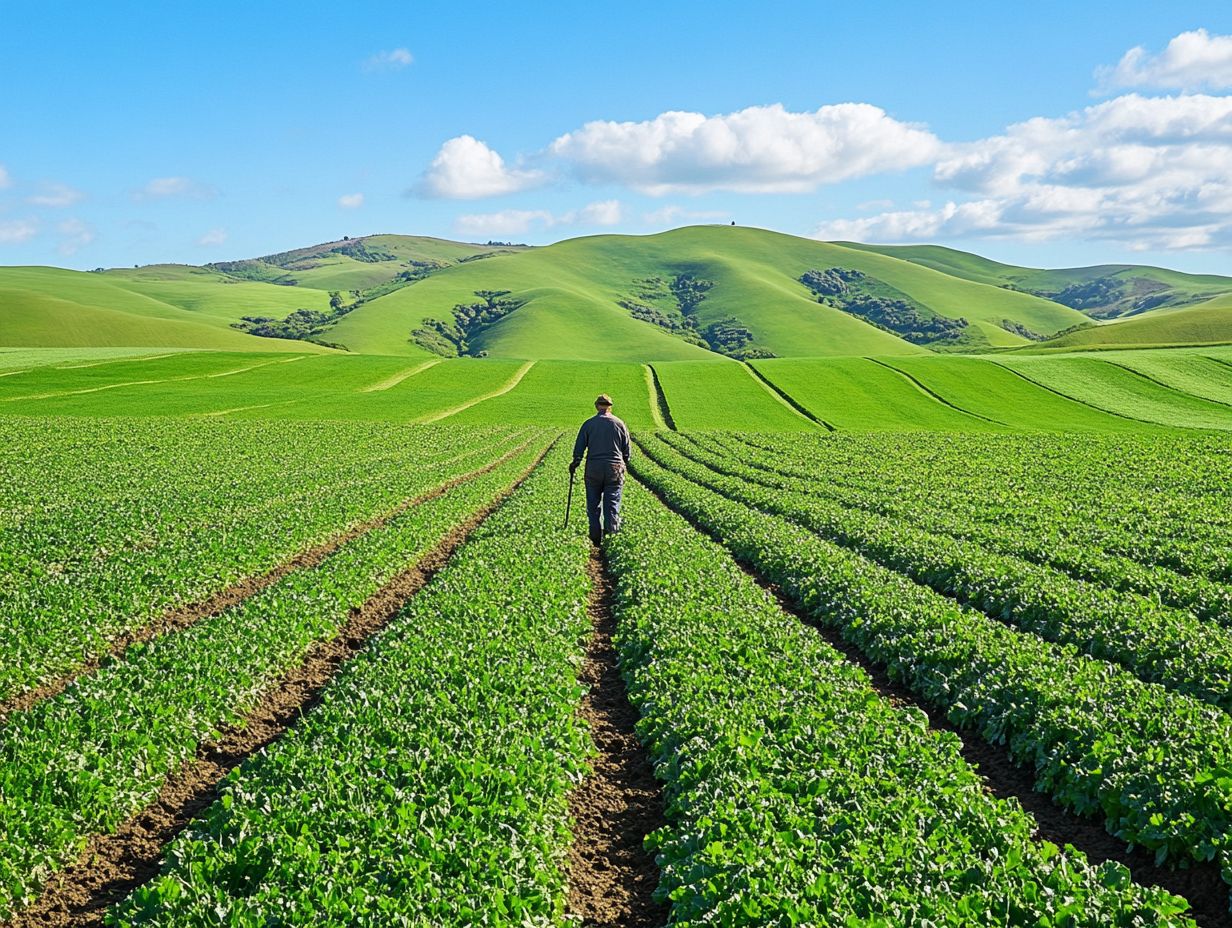
The best cover crops for your soil depend on factors such as climate, soil type, and your goals. It’s advisable to consult with a local agriculture expert or research the best options for your area. Cover crops can be planted at various times throughout the year, typically after harvesting your main crop or in the fall before the first frost.
How do I plant cover crops?
Cover crops can be planted by broadcasting seeds over the soil, drilling them into the soil, or using a seed spreader. Preparing the soil by removing weeds and loosening the topsoil is important before planting.
Do I need to fertilize my cover crops?
Cover crops can benefit from fertilizer. However, they can also fix nitrogen from the air and transfer it to the soil through their roots.
Choose a cover crop that matches your soil’s nutrient needs.
When should I terminate my cover crops?
Cover crops should typically be terminated before they start to flower and set seeds. This helps them break down and enrich the soil with organic matter.
The ideal time to terminate cover crops depends on the type you re using and your soil goals. Act wisely to maximize your soil’s health!

